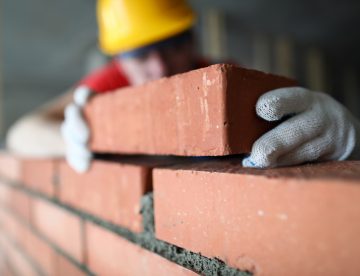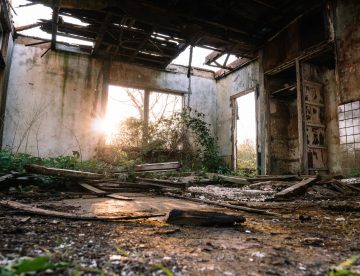
Following repeated calls from leaders within the construction industry, the Home Office has finally announced it is easing visa restrictions for brickies, roofers and chippies from overseas by adding them to the UK’s Shortage Occupation List (SOL).
This list is designed to help sectors where employers are struggling to fill vacancies and the move to include more construction trades has been welcomed by the Construction Leadership Council as a solution to addressing immediate skills shortages in the UK. Find out more in this week’s quick-read blog.

Today (20th June) is World Refugee Day, a moment when people are invited to not only consider the plight and dismal conditions faced by millions of refugees around the world, but also to celebrate the strength and courage of people who have been forced to flee their home countries to escape disaster, conflict or persecution.
Offering the tagline ‘Hope away from Home. A world where refugees are always included’, this year’s theme made us wonder what the inclusion of refugees has meant for the UK in general and how it might work within industries like construction. Read this week’s blog to find out more.

When working as part of a team, it is almost inevitable that, at some point, you’ll experience a situation involving conflict – a difference of opinion, a misunderstanding or possibly an outright argument with a colleague.
This is often because, although you may be working towards a shared goal, most teams are made up of people from diverse backgrounds with different personalities, perspectives and opinions. However, conflict doesn’t have to be seen as wholly negative as, if it’s handled well, it can actually be an opportunity for healthy debate, personal growth and support innovation. See if you can achieve this by following our six conflict resolution tips.

Manufacturing industries have been developing and using robotics for several decades, the first example being a robot that was capable of transferring objects from one point to another within a distance of around three and a half metres, designed by George Devol in 1954.
Jump forwards to today and intelligent robots have taken over many of the manufacturing tasks that require high precision, speed and endurance. They are becoming smarter, more flexible and increasingly capable of working independently of humans. It’s safe to say that, without robots, most large manufacturing companies would struggle to survive.
With such advancement taking place in one sector, we thought we’d take a look at what’s happening in construction. Read on to find out three ways in which our industry is joining the robotic revolution.

Once upon a time (before we headed into today’s digital world), the main distraction most of us had during a working day was a conversation about the best of last night’s television over tea break!
But now, with notifications informing us of the arrival of the latest email, text, WhatsApp or social media post/ story, our working days can sometimes feel like one long interruption, resulting in little progress on the ‘to do’ list.
There are, however, methods which can be used to get around this problem so, today, we’re going to look at an approach called ‘deep work’. Read on to find out how you can kill those distractions and get more done.

With soaring energy prices, interest rate rises, some huge hikes in the cost of materials and the continuation of labour shortages, many construction industry businesses could be in for some turbulent times this year.
In many cases, the cost pressures are made worse by the fact that contractors are both tied into existing work which was based on estimations set well before the current price rises and are also busy looking at how they can respond to invitations to tenders in ways that make the jobs viable within the current circumstances. In today’s blog, we’re taking a look at what construction businesses (and those who work within them) can do to face this challenge.

The humble brick: we work with it every day and probably never really think of it as anything more than a key component of the structures we build.
However, for some people, the brick is just the starting point of an innovative project or an artistic endeavour! So, just for fun, in this week’s blog we’re bringing you two short stories that might make you see bricks in a new light.

According to CPRE The Countryside Charity, the UK has over 25,000 hectares of brownfield land across 21,000 sites. Many are run-down plots of land that represent all kinds of safety hazards and, when stuck in such poor condition for several years, they become a real blot on the landscape. So what should all this land be used for? A survey carried out by Romal Capital found that 59% of the British public would opt for either the building of modern, efficient homes and communities to help solve the ongoing housing crisis or cultural landmarks. Read more about both the survey and the work we’re doing to prioritise brownfield development in this week’s blog.

When it comes to living, breathing and working within the context of an environmental crisis, it appears the human response is a bit like a game of tug-of-war with various opinions and decisions pulling in opposite directions. On the one hand we have an increasingly urgent need to reduce emissions and halt the disastrous effects…

